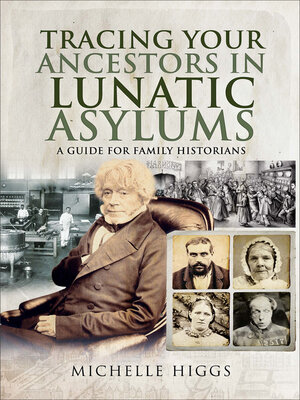Tracing Your Ancestors in Lunatic Asylums
ebook ∣ A Guide for Family Historians · Tracing Your Ancestors
By Michelle Higgs

Sign up to save your library
With an OverDrive account, you can save your favorite libraries for at-a-glance information about availability. Find out more about OverDrive accounts.
Find this title in Libby, the library reading app by OverDrive.



Search for a digital library with this title
Title found at these libraries:
| Library Name | Distance |
|---|---|
| Loading... |
A concise handbook for genealogical research into patients of British mental institutions from the 18th to the early 20th centuries.
An expert in British Victorian history, Michelle Higgs helps readers uncover information about relatives whose lives are too often forgotten. Higgs concentrates on the period from the eighteenth century to 1948 when the National Health Service was founded. Using original records, contemporary accounts, photographs, illustrations and case studies of real individuals, Higgs brings the story of the asylums and their patients to life.
Different types of institution are covered, including private madhouses, county lunatic asylums, facilities for idiots and imbeciles, and military mental hospitals. Chapters look at the admission procedures and daily routine of patients, plus different kinds of mental illness and how they were treated. Separate sections discuss the systems in Scotland, Ireland, England and Wales. Information is provided on all the relevant sources, from wills and the census to casebooks and admission and discharge registers.
An expert in British Victorian history, Michelle Higgs helps readers uncover information about relatives whose lives are too often forgotten. Higgs concentrates on the period from the eighteenth century to 1948 when the National Health Service was founded. Using original records, contemporary accounts, photographs, illustrations and case studies of real individuals, Higgs brings the story of the asylums and their patients to life.
Different types of institution are covered, including private madhouses, county lunatic asylums, facilities for idiots and imbeciles, and military mental hospitals. Chapters look at the admission procedures and daily routine of patients, plus different kinds of mental illness and how they were treated. Separate sections discuss the systems in Scotland, Ireland, England and Wales. Information is provided on all the relevant sources, from wills and the census to casebooks and admission and discharge registers.







